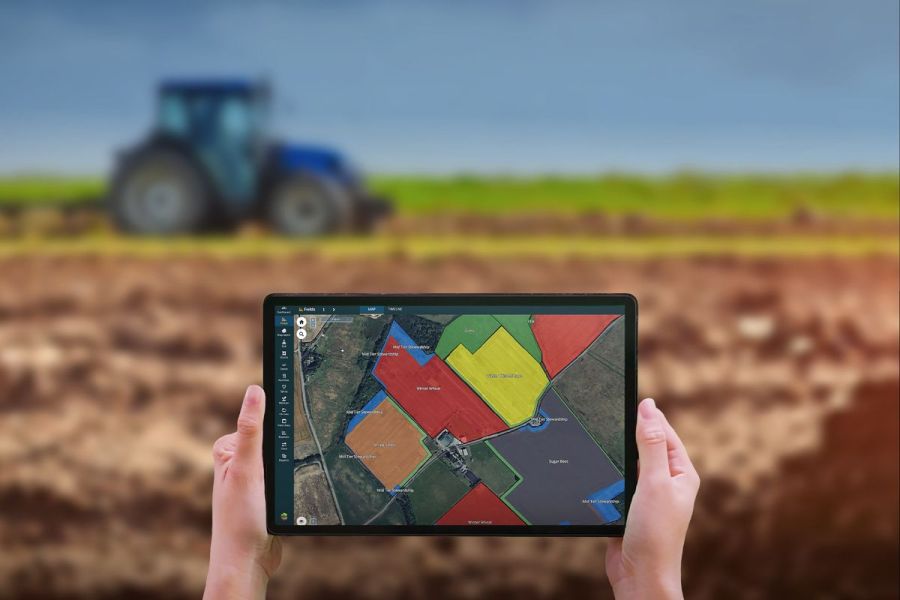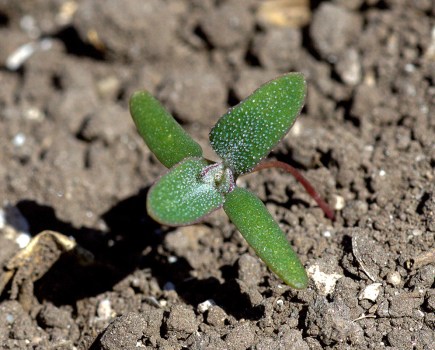Following the official launch of Omnia’s EasyPlan upgrade at this year’s Cereals Event, how has the newly packaged all-in-one farm management system been received so far? CPM garners initial feedback from those using the tool on a daily basis.
“It’s been designed with farmers in mind and I believe that shows.”
By Janine Adamson
Easy by name, easy by nature – that was the promise from Hutchinsons earlier this year when it launched its Omnia revamp in the guise of the EasyPlan upgrade. But is the farm management software really as simple to use as it suggests?
According to Suffolk farmer Tom Jewers, he’d found it difficult to appreciate any benefits above and beyond the tool he’d been comfortably using for years, until Omnia came along. And now with the upgrade he’s fully reaping the advantages.
From tracking farm-scale trials to scrutinising yields, Tom says data is at the heart of the family’s farming business. “Data is integral to what we do – I regularly interrogate yield maps to understand under-performing areas to help inform remedial action. This could result in going out with a spade or instigating soil mapping.
“We also have various small-scale trials on the farm for the benefit of both ourselves and third parties which can be difficult to keep on top of. And now there’s the Sustainable Farming Incentive (SFI) to add into the mix as well,” he says. “So it can be daunting to manage so much information.”
Having everything in one place is a core attribute which gave Omnia its initial appeal, adds Tom. “You don’t want to be diving across systems all of the time. With so many layers of data to view on a daily basis, we’ve found ourselves using the platform extensively because everything is in a central place.”
Although on the market for the past eight years, it’s Omnia’s recent upgrade – revealed to the public at this year’s Cereals Event – which has proven a significant development for both Hutchinsons and those who use the digital tool.
In fact, at the press launch in London, Hutchinsons managing director Gordon McKechnie explained the aim was to produce a new style of farm management software which provides a suite of services. He added that it’s more than a technology tool – Omnia’s upgrade is a fundamental shift in agricultural practice to ensure productivity and sustainability gains.
Reflecting on the recent upgrade, Tom says it’s noticeably stream-lined management of the 380ha farm even further. “An example of this is attributing variable rate input costs to variable rate yield maps to calculate gross/net margins spatially. Until now that involved a level of manual input but is now fully automated which avoids duplication.”
For this, users can compare variable and fixed costs at a sub-field granular level with traffic light labelling from red to green. The automation is achieved through prices being updated as crop protection plans are inputted and completed, this is then pulled through to Omnia’s business module.
Tom also commends improvements which have been made to the system’s task and operation management provision. Not only does Omnia offer three levels of flexible record management depending on the person involved and their seniority in the business, but through the Scout app it’s now possible to record live operations and update work orders ‘on the fly’ as they happen in the field.
This includes the ability to take photographs of a crop or problem, draw points on the site map, log issues and add comprehensive notes. “Logging straight into the system via the Scout app is a big plus and with Omnia being cloud-based, you don’t have to be in the farm office to use it. It’s a one-stop shop,” comments Tom.
“Equally, with new initiatives such as SFI, it can be easy to forget to record when operations such as topping have been done, but now we can take a photo for evidence and attach that to the work record so everything is fully traceable. Your mind is at ease that the evidence for each of the various actions is in one place and easily accessible.”
It could be argued that compliance and the associated administrative work will weigh heavy on many farmers’ minds, but now requirements such as soil and nutrient management plans can be generated at the click of a button once the relevant data has been inputted into Omnia.
From an agronomic perspective, Farmacy’s Toby Clack says this alleviates pressure on his side too. “For something like a Red Tractor audit which can be quite stressful, you know when you get the phone call that everything will be ready in one place which is a relief for all involved.
“But from a very practical perspective, Omnia has revolutionised the speed at which I can deliver crop recommendations. For something simple, I can even do it from my truck, which just wasn’t possible before,” he explains.
“Being a live platform it enables greater agility. In a season such as the one we’ve just experienced, you have to be able to react quickly to changing conditions and this could mean recommendations being delayed. With updates being instantaneous in Omnia, it avoids any confusion or paperwork duplication, and increases speed.”
Toby also highlights the tool’s stock management feature, which he believes is particularly useful as portfolios change. “It automatically flags if products are nearing expiry or use-up date. With the armoury continuing to dwindle, this helps to both avoid wastage and ensure regulation is adhered to.”
The stock module is a new feature following the recent upgrade and allows users to create and manage input orders, manage suppliers as required and track orders with automatic status updates. It also includes dedicated stores depending on product type (seed, chemical, fertiliser etc) with the facility to have multiple location options across a business.
Finally, the feature is automatically updated with a stock taking mode for auditing purposes. With all of this function, the stock module is something which Tom is looking forward to using during the coming season. “We’ve played with it during the past few months but are now migrating over to help manage all our inputs for Harvest 2025,” he says.
Despite Omnia being a live digital tool which can be accessed remotely by all involved, which in theory could reduce direct communication, Tom says it’s actually improved how he works with his agronomist. “It can be so easy to miss an e-mail but now we’re all working from the same information.”
Toby agrees that rather than create a disconnect, it’s helping to build customer relationships. “With so much data at our fingertips, from variable rate maps to satellite imagery, it generates more conversations than not because that information has to be interpreted.
“Plus it still has to be ground-truthed by a farmer, who often has a wealth of historical knowledge about the farm which the data doesn’t necessarily reveal,” he adds.
According to Toby, he’s now more prepared when he arrives on farm and in a better position to support his growers. “Through the phone app I can see the status of different tasks such as sprayer jobs so there’s far less guesswork.
“All-in-all, Omnia is enhancing my work as an agronomist and with a pipeline of future developments, it’s exciting to see it all unfold.”
One such development, which was in response to market feedback after the upgrade launch, has been undertaken to help growers better navigate SFI, explains Hutchinsons head of field-based IT, Lewis McKerrow. “For each field, users can assign one or multiple SFI actions, for example, no insecticide (IPM4/CIPM4). A report can then be populated specifically for SFI.
“This is then integrated into the spray module – during the Halo audit (Omnia’s back-end pesticide database), the system will warn you if you try to select conflicting products,” he says.
Another change has been to the machinery shed in the business module to help oversee the maintenance of kit such as sprayers. “Users can now add MOT certificate information including expiry dates; in a future update Omnia will then provide a reminder when that’s coming up for renewal. Feedback suggested this is important due to the information being required during inspections,” highlights Lewis.
As well as new functionality, Lewis adds that recent user feedback has resulted in minor tweaks being made to most aspects of the tool, all to improve user experience. “The upgrade has been really well received by both existing and new customers.
“From our own customer base we’re seeing more switch over to Omnia as time goes on. We believe this is because there was a desire for a simple to use system with an intuitive, fresh design. The upgrade has delivered on that.”
Beyond all of the function and snazzy features, Tom believes the most valuable USP (unique selling point) of Omnia is the fact it’s been developed in the UK for UK farmers. “The level of support you receive is impressive – the service desk team is extremely responsive even at weekends.
“I think that’s its best attribute – there are specialists in the UK working solely on Omnia to provide speedy responses to queries. It’s been designed with farmers in mind and I believe that shows,” he says. “Even down to the training videos which walk you through each function, step-by-step.”
The only negative Tom can identify is that the back-end data set is still developing, which can cause hiccups in terms of minority crops. “For example, we’re growing a crop of buckwheat and I had to log a help query when it came to inputting that into the platform. However, the speed at which the response came back means it wasn’t really an issue.
“Our rotation is becoming very fluid so we’re having to grow more niche crops as cereal breaks. But the more users that do this and contribute to the data behind Omnia, the less individual queries will have to be raised,” he suggests.
This is because the software is constantly evolving, adds Lewis. “We’re in the process of redesigning the nutrition module to reflect how we’ve upgraded the spray module. Part of this will be to expand the Halo database to accommodate nutrition audits.
“We’re also about to launch smart phone push notifications which are ideal for task management and grabbing attention when users don’t have Omnia open on a device,” he comments.
Omnia is available at three service levels – Omnia Access (£0), Omnia Field Manager (£3.15/ha) and Omnia Business Manager (£6/ha). These range from a free service for basic farm mapping (Omnia Access), through to full analysis of information for a range of variable input applications (Omnia Business Manager).
“We’ve committed a lot of resource to help on-board new customers and ensure they’re supported. Receiving such positive feedback from the industry means we’re delivering what we set out to achieve,” concludes Lewis.
This article was taken from the latest issue of CPM. Read the article in full here.
For more articles like this, subscribe here.
Sign up for Crop Production Magazine’s FREE e-newsletter here.




